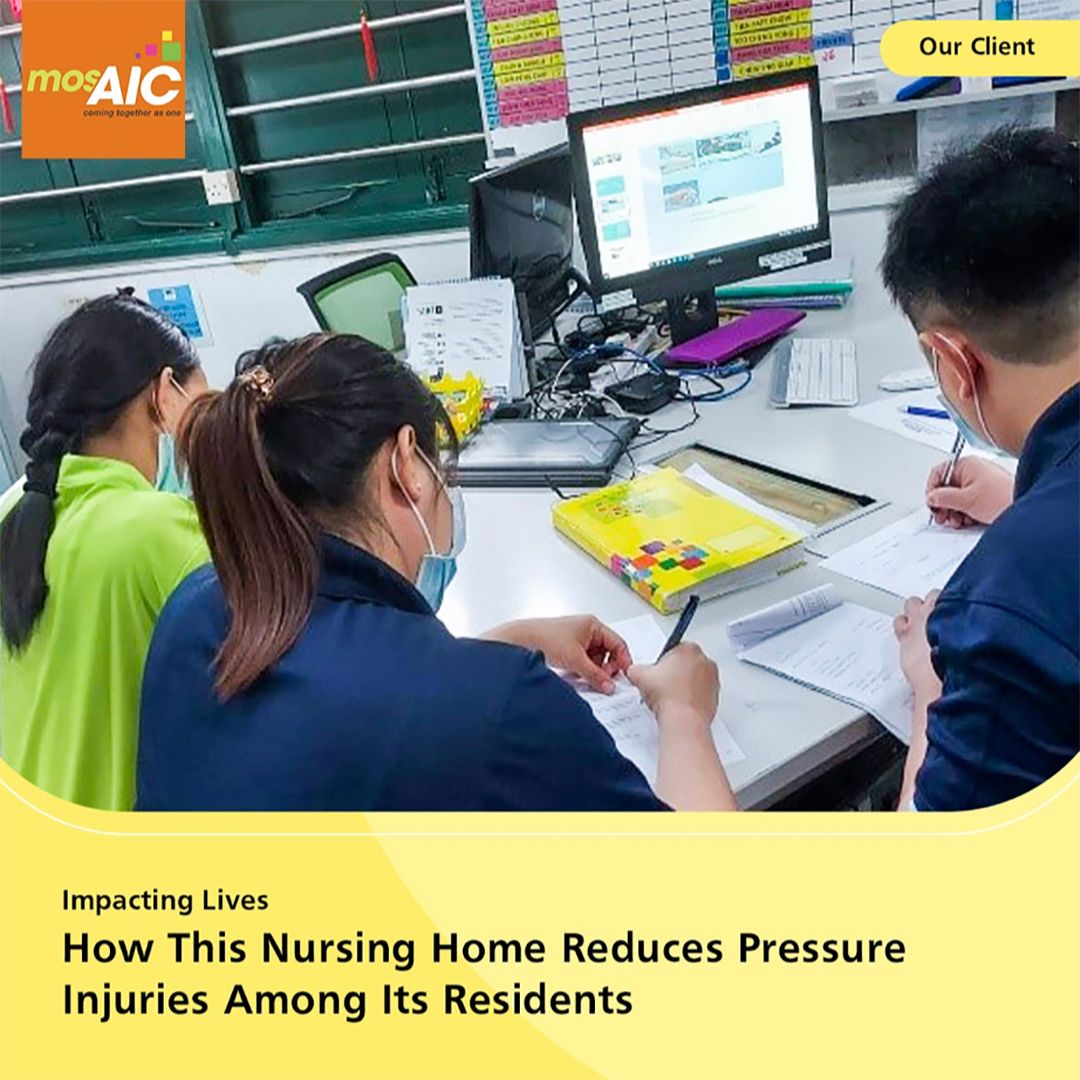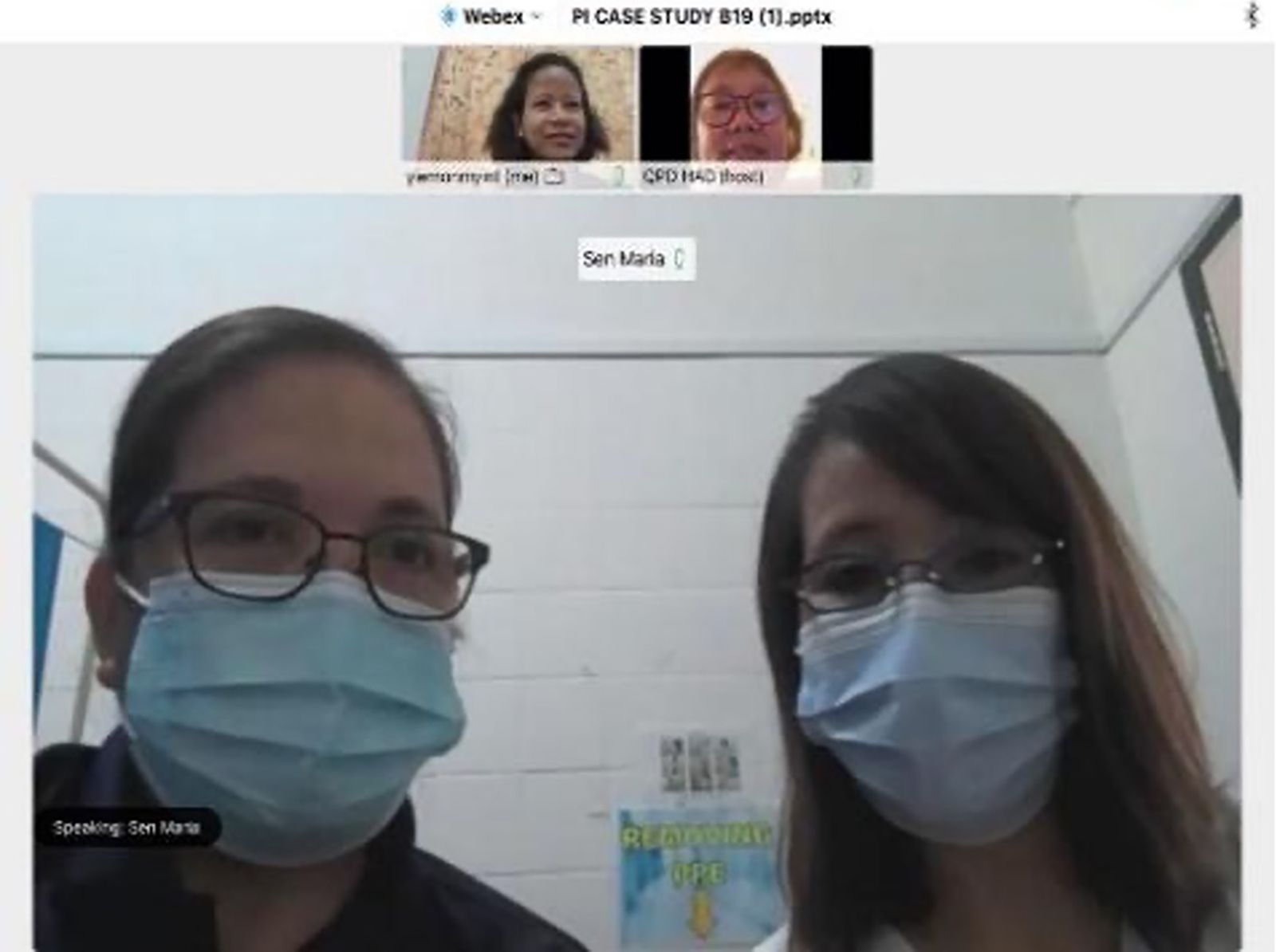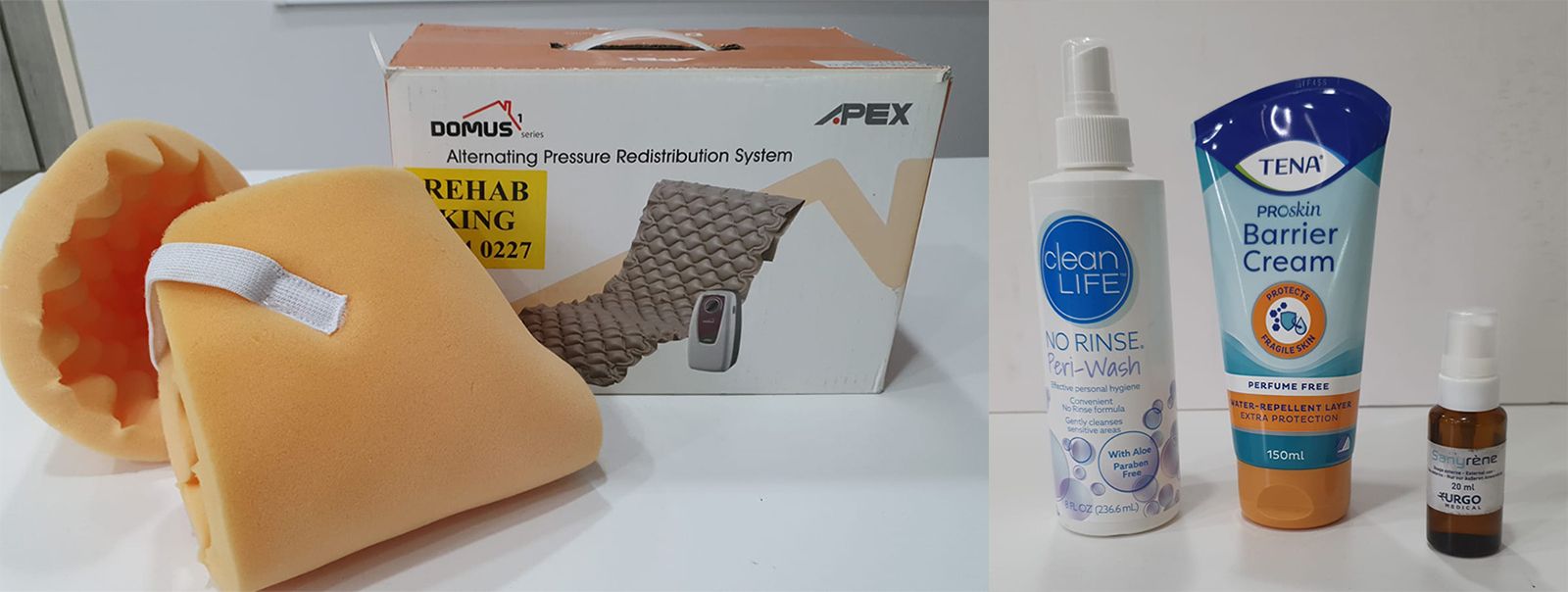How This Nursing Home Reduces Pressure Injuries Among Its Residents

Our Community Care partners are constantly on a quest to improve the well-being and care services for seniors in the community. With improvements in the quality of clinical care, organisations are now able to better the lives of seniors in the long-term care sector. mosAIC explores how our partners improve clinical care within their organisation.
Pressure injuries (PI) is a common issue among residents in long-term care facilities, as many of them have limited mobility. PI, more commonly known as bedsores and pressure sores, often develop in patients who are bedridden, unable to move or unconscious. Without sufficient care and supervision, it can potentially lead to a skin infection. Depending on the severity of a patient's PI, physical condition, and other comorbidities, PI can take very long to heal, making it particularly dangerous for seniors.
In a bid to improve the quality of life of their residents, Lee Ah Mooi Old Age Home (Thomson) (LAMH Thomson) decided to launch an initiative to prevent and reduce PI incidences among patients in their home.
The Start of Improving PI within the Home
Following a training workshop conducted by Agency for Integrated Care (AIC) Singapore in March 2021, the LAMH Thomson team piloted the project to incorporate the knowledge and training they picked up from the workshop. They developed various interventions to help reduce the incidences of newly developed PI within their home, such as:
- Pressure Injuries Prevention (PIP) Care Bundle
- Staff training on PI
- Review of existing protocols for management of PI within the home
1. PIP Care Bundle
The PIP Care Bundle was implemented in June 2021 in a pilot ward to prevent and reduce PI incidences in residents. Using a risk-based approach and analysis, the care bundle includes a document that lists various ways to support a resident at risk for developing PI. A screening tool called the Braden Scale is then utilised to classify residents based on their PI risk, and a set of interventions based on the resident's risk category is then implemented e.g pressure releving device and skin care products. These interventions are guided by evidence-based guidelines and literature.
2. Staff Training on PI
From May 2021, to increase staff awareness and knowledge on the subject and hence reduce risk of PI among residents, the project team also conducted a series of in-house training for the staff at LAMH Thomson on topics related to the condition.
3. Review of existing protocols
Around the same time that the care bundle and training were introduced, the team also conducted a detailed review of existing protocols within the home in order to manage PI and incontinence-associated dermatitis (IAD), which may lead to skin damage. Following the review, they made these additions and changes:
- Introduce targeted competency-based training and assessment
- Ensure development of comprehensive knowledge and skills regarding PI
- Implement proper training to improve the staff’s learning attitude towards learning in PI
- Utilise participative research study of evidence-based practice in the management of IAD

The Benefits of PI Interventions
Since the pilot project’s commencement in June 2021, the seniors at LAMH Thomson have benefited from the initiatives:
- A decrease in the number of residents with newly developed PI
- Improved skin integrity of residents
- Reduced healthcare costs as caring for PI requires wound dressing and managing episodic infection, which could lead to hospitalisation of residents.
- Improved quality of life and comfort for residents
Simultaneously, the aid of pressure-relieving devices, basic skin care products, turning charts and care bundle posters allowed for a clearer delivery of information and consistency in care for residents.

Equipped with a greater understanding of PI and knowledge gained on managing skin damage, the staff at LAMH Thomson who were involved in this initiative saw the following benefits:
- The project empowers staff by equipping them with knowledge and skills in PI prevention based on evidence-based practice
- It provided training opportunities
- It reduced the need for wound dressing, hence reducing staff workload
- It serves as a guide to facilitate consistent and reliable care
On top of efforts to prevent and reduce PI, the staff has also taken steps to regularly pick up new skills and their knowledge on PI and use devices that minimises friction against the skin when caring for or moving their residents, such as patslide, draw sheet and transfer sheets.
Although this project is still in its pilot phase, the LAMH Thomson team has achieved a significant outcome by having zero PIs in their pilot ward since June 2021.
Getting Help to Enhance Safety
The PI Prevention Collaborative, organised by AIC, included training and workshops for the staff of Community Care organisations. During this collaborative, project teams from different homes put their heads together and work towards the same goal of PI Prevention. This approach enables cross-learning, as the project teams share their experience and learning points with one another.
About LAM Old Age Home
Established in the mid-1960s, Lee Ah Mooi Old Age Home (LAMH) is a family-run nursing home for those who don't qualify for government-funded homes, but are unable to afford the fees of private homes. Made to be affordable with personalised eldercare services, LAMH aims to be the leading provider of eldercare services by providing innovative, high impact solutions to improve the health and well-being of the residents.
